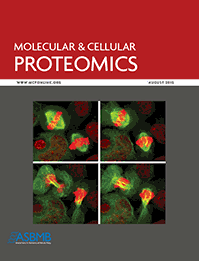18 Ağustos 2015 Salı
Directly search expressed sequence tags with Mascot
Cool tips in this month's Mascot Newsletter for those of you who are studying weird things that haven't gotten fully annotated genomes. Search with your MS/MS data against Expressed Sequence Tags (EST). The newsletter highlights one fish that only has 1,200 annotated proteins but nearly a quarter-million ESTs. Sure, its more work for you to sort it out, but it beats only coming up with 1,200 proteins and they'll annotate it all someday!
Honeybee development puzzled out by proteomics and verified by knockout!
I'm going to be perfectly honest here. I know nothing about honeybees. Not a thing. I know there aren't as many of them as there were before(?) and I know David Tennant's Dr. Who didn't seem to know why that was. I did however have an impressively scary experience with what I think were honeybees this weekend when thousands of them descended on what I thought was a hummingbird feeder and this seemed too coincidental to pass up on. (They drained an 8 ounce container of hummingbird food in minutes. It was amazing. May repeat and film when I get home!)
Anywho! In this study, a label free proteomics approach was used to analyze the differences between honeybees as they differentiate into one type or another. Turns out they found some key upregulations in the bigger bees (drones?) and the smaller ones (with royal names). The differentiated proteins made sense as smaller bees had a whole lot less of the cytoskeletal construction proteins than the larger dumb bees. In an interesting follow-up, they uses interfering RNA on one of the proteins in this pathway and totally messed a bee up! You can read this article in ASAP JPR here!
16 Ağustos 2015 Pazar
An informed opinion on bioinformatics for whole human proteome projects.
From an instrumentation stand-point, assembling an entire proteome is something that many labs have the ability to do. Is it still a challenge? Sure! Sample prep and prefractionation for complex organisms is still going to be stuff that you're really going to have to do right.
What about the data processing side of things? This might actually be where the real problems are right now. If you've got an FDR controlled at 1% at the MS/MS level and you have one million MS/MS spectra..that is saying you probably have about 10,000 things wrong. If you've got a billion? Thats 10 MILLION bad matches.
If you follow bioinformatics on social media in any way, chances are you know of Yasset. He has a lot of experience with datasets as large as, and much larger(!) than the ones we're generating. In this post on his blog, he takes a look at the first human proteome drafts, the re-analyses and opinions from thought leaders in the field and adds some of his own thoughtful insight to it as well.
14 Ağustos 2015 Cuma
HHHUUUUUUUUPPPPPOOOOOOO!!!!!
Confirmed! I'll be seeing some of y'all at HUPO next month!
Backdated cause it was in my Spam folder!
13 Ağustos 2015 Perşembe
More Galaxy proteomics -- informed proteomics by transcriptomics
You'll find a lot of posts in here regarding Galaxy, particularly the GalaxyP project that is kind of centralized around my friends in Minnesota. Galaxy is a HUGE package in genomics research with tons of great tools and an amazing support community. More and more of these tools and researchers are thinking (quite logically!) that they should integrate proteomics, and we all stand to gain from access to these resources.
In a brand new paper in press at MCP, Jun Fan et al., demonstrate the usage of Galaxy tools for transcriptomics and how we can get better peptide identifications and improved protein inference by leveraging these tools versus our MS/MS spectra. I think that was a run on sentence. Who has time for grammar when you're this excited? Not me!
How'd they do it? Here is an interesting schematic stolen from the paper. Does it look convoluted? Of course it does! If it was simple, why would we even need bioinformaticians? Making it look complicated is job security. But when you break it down, it really isn't that bad.
What are the points I don't have in my typical workflows? Well, I have RAW files, I can search them, I've got FASTAs, and I can BLAST unmatched spectra (even the de novo ones, thanks to the new versions of Peaks and the de novo GUI). The only thing I don't really have here is the ability to make my transcriptomics data easily searchable. But they outline open source tools in the paper that do. Time to convert some variant call files to FASTA!!!
12 Ağustos 2015 Çarşamba
Amazingly thorough list of proteomics resources from PastelBio
From the outside, one might argue that a weakness of our field is our level of organization. We have tons of tools but they are all over the place. I've mentioned this before, but this is definitely worth bringing up again: Pastel Bioscience has been trying to help us get organized by creating an absolutely exhaustive list of databases and resources.
You can find the list here.
And if your tool isn't present? Shoot them an email so they can add it! Lets get organized!
11 Ağustos 2015 Salı
Fantastic review of DDA, DIA and subsets of DIA data analysis techniques
Need a quick read that really breaks down the advantages/disadvantages of DIA vs DDA techniques? How bout a new distinction between the ways that different groups are processing DIA data?
You should totally read this new paper from Ying S. Ting et. al., The highlight is breaking down the DIA analysis techniques into those that are spectrum-centric from those that are peptide-centric, and it really does make a difference.
Kaydol:
Kayıtlar (Atom)
Popular Posts
-
A recent paper in PNAS makes the statement in the title "Protein Carbamylation is a Hallmark of Aging. You can find it here . They find...








